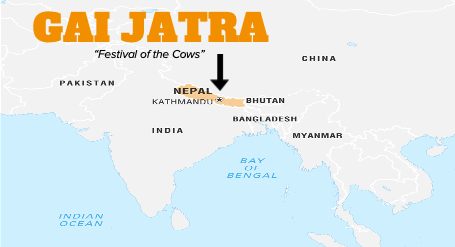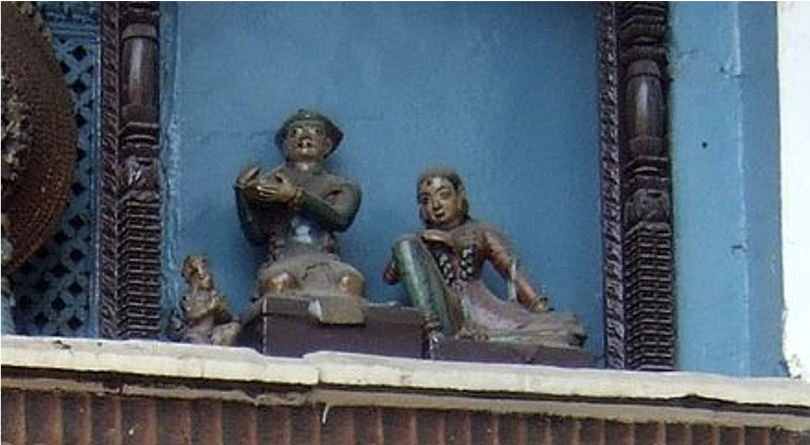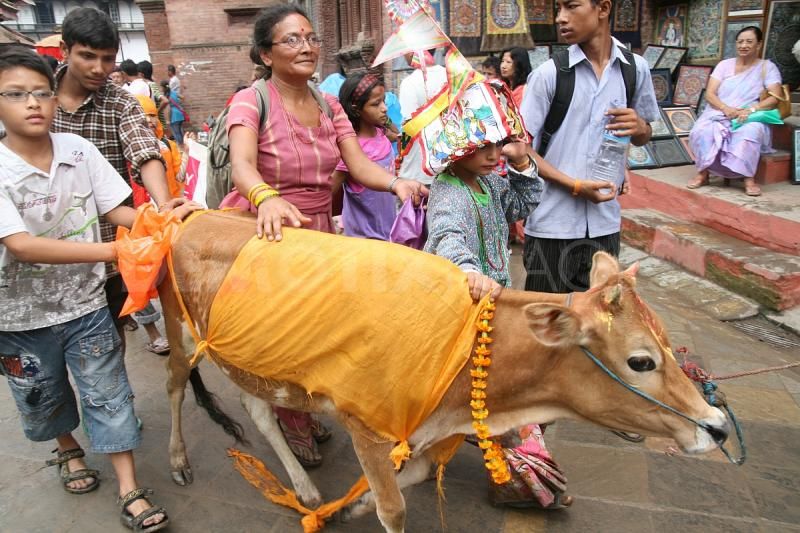“FESTIVAL OF THE COWS”

Origins
Gai Jatra is a tradition that began in Nepal in the 17th century. It originated when Nepal’s King Pratap Malla originally invited people to dress up in costume, and perform stunts and plays in front of his palace in hopes of making his wife happy again when they had lost their young son. He did this so that he could show the Queen that it was not just the royal family that had lost a loved one. The queens smile was temporary but the procession gave the Queen comfort knowing there was several deaths in the city during the period and she wasn’t alone. Gai Jatra is celebrated in three distinct districts in the valleys: Kathmandu, Latipur, Bhaktapur.

King Pratap Malla playing the flute for the Queen 
The Procession

Gai Jatra, or “Festival of the Cows,” is a popular festival celebrated on August 19th. Traditionally, every family who has had a death in the family during the year of must participate in a procession through the streets of Kathmandu, leading a cow. However, if a cow is unavailable then a young child dressed as a cow is considered an equal substitute.
Symbolism of the Cow
In the Hindu religion, cows are thought to be deeply represented and a sacred animal. They are well respected for their strength but also gentle nature. During the Gai Jatra festival, the cows are symbolized to lead the departed souls to heaven. There is the belief that the deceased cross into heaven by grabbing the tail of a cow to cross a river.
The Festival
During the festival, music plays an important role in the cities ritual. There is live music, and dancers that tap wood sticks together to the drumbeat. Musicians fill the streets and there is singing, dancing and laughter from all around. People also visit shrines and temples on the way. During the procession, people are lined throughout the streets giving away food and drinks to the participants through the procession. They wear colourful red or yellow brocades, or silk gowns and have head gear made of a picture of cow or horn-like paper decoration. Some accessories worn includes marigold garlands or beads. Painted faces or wearing face masks is common, while some people choose to dress up as different Gods.
Gai Jatra commemorates those who have died, and helps others feel united by seeing the other members of the community in the procession, who have also had a death in their family. The music and laughter helps to mend the grief of the community. It has been said the people of Kathmandu Valley are not only masters at accepting death, but celebrating it in the liveliest way.




